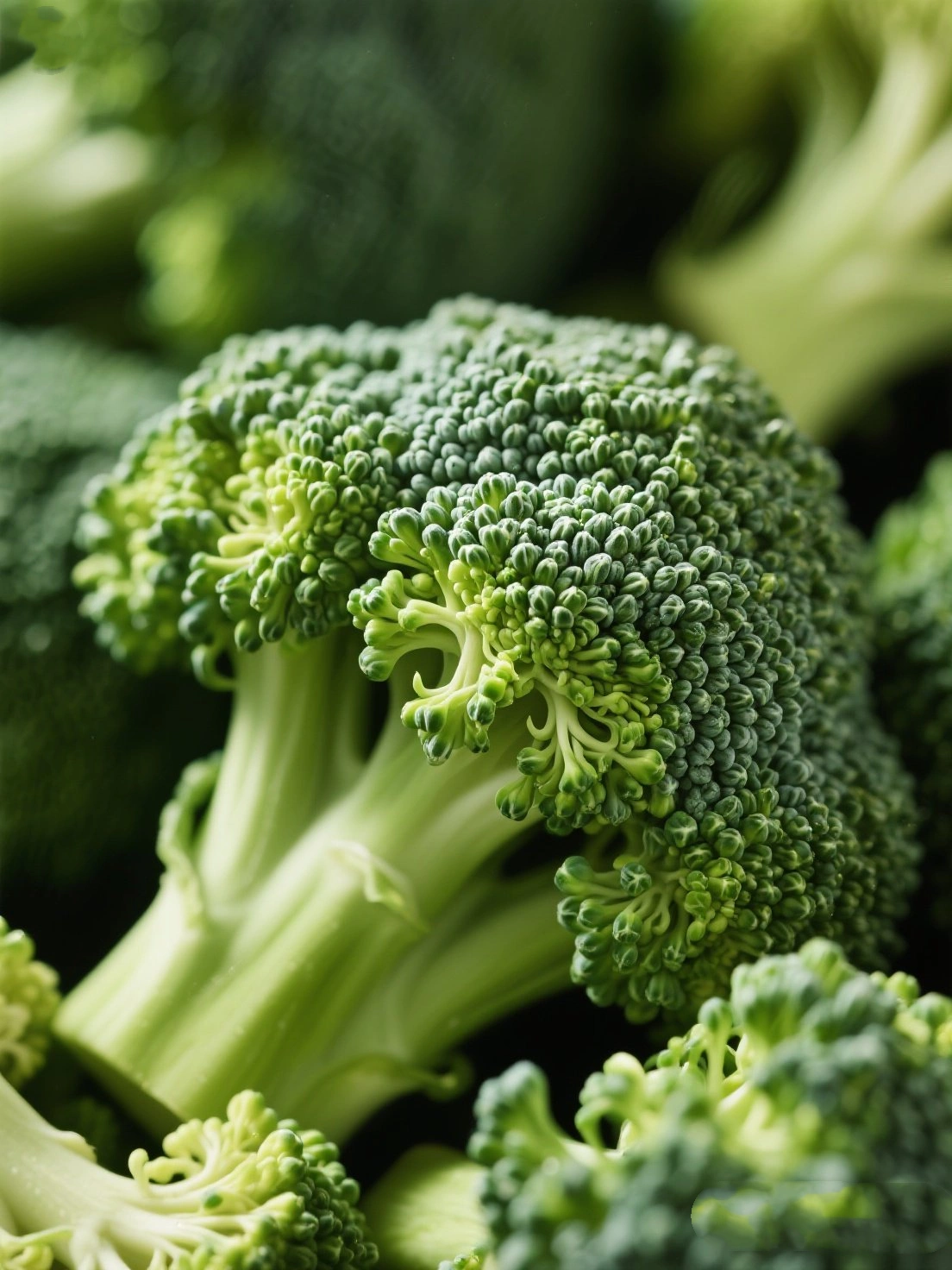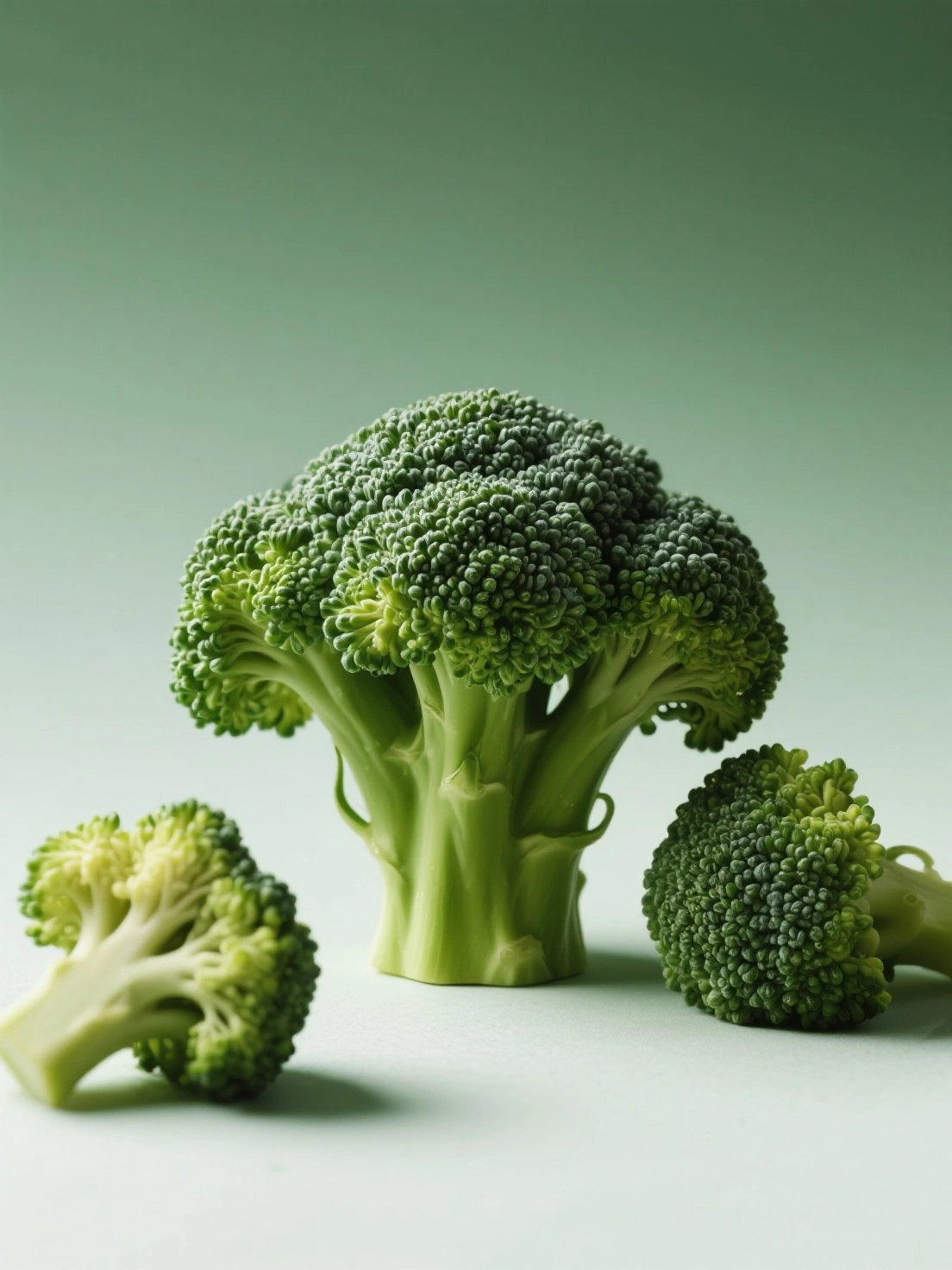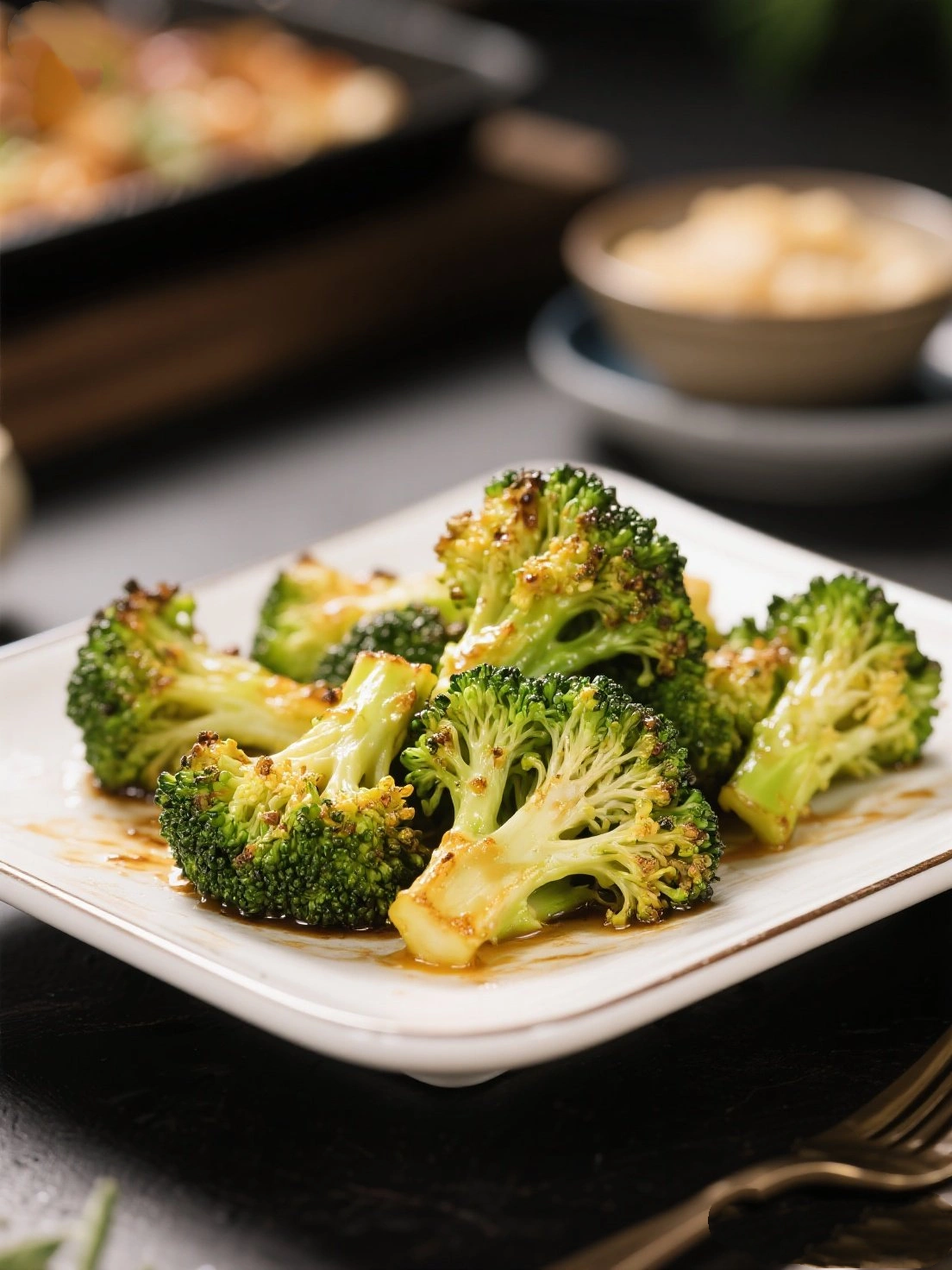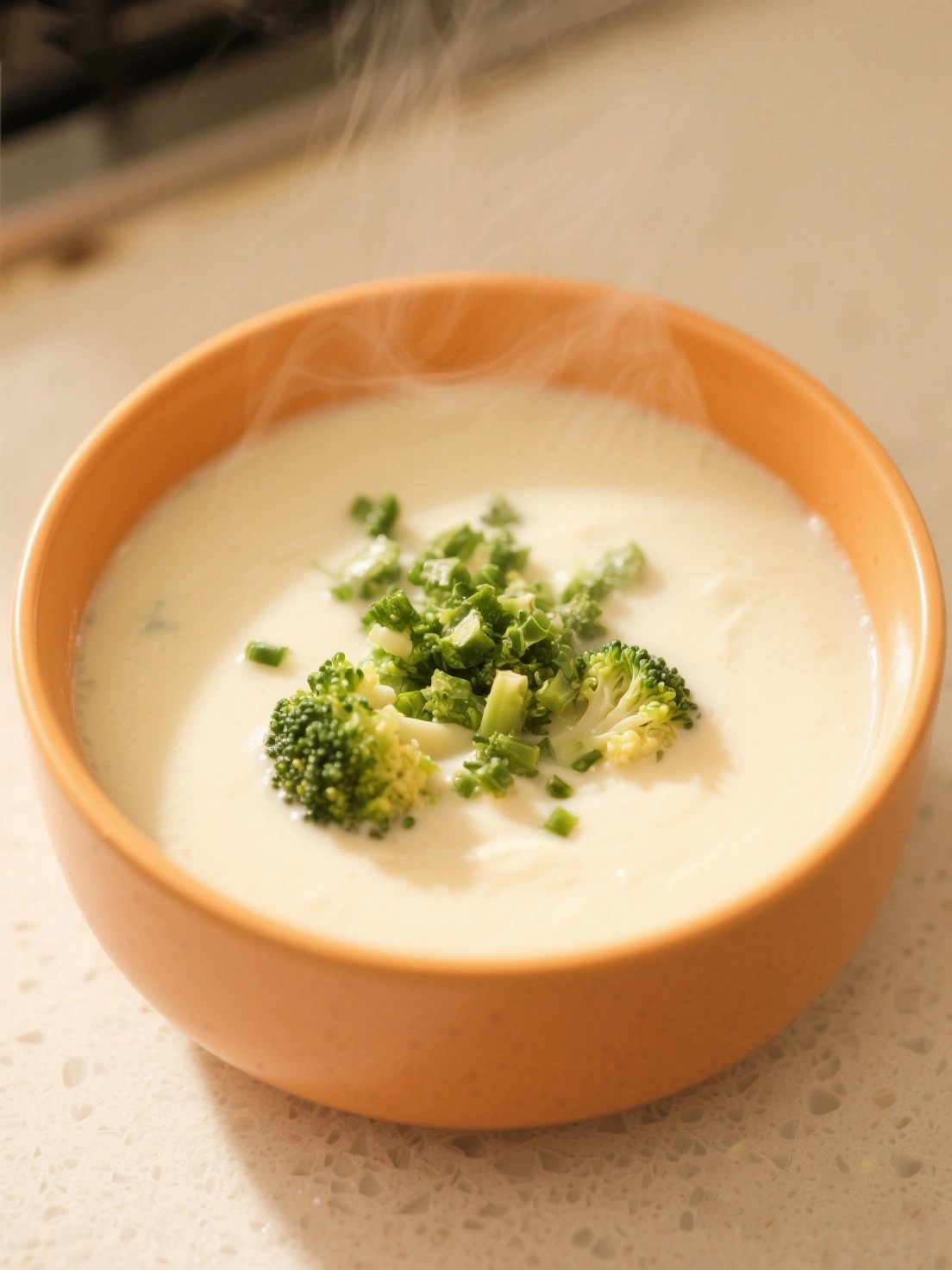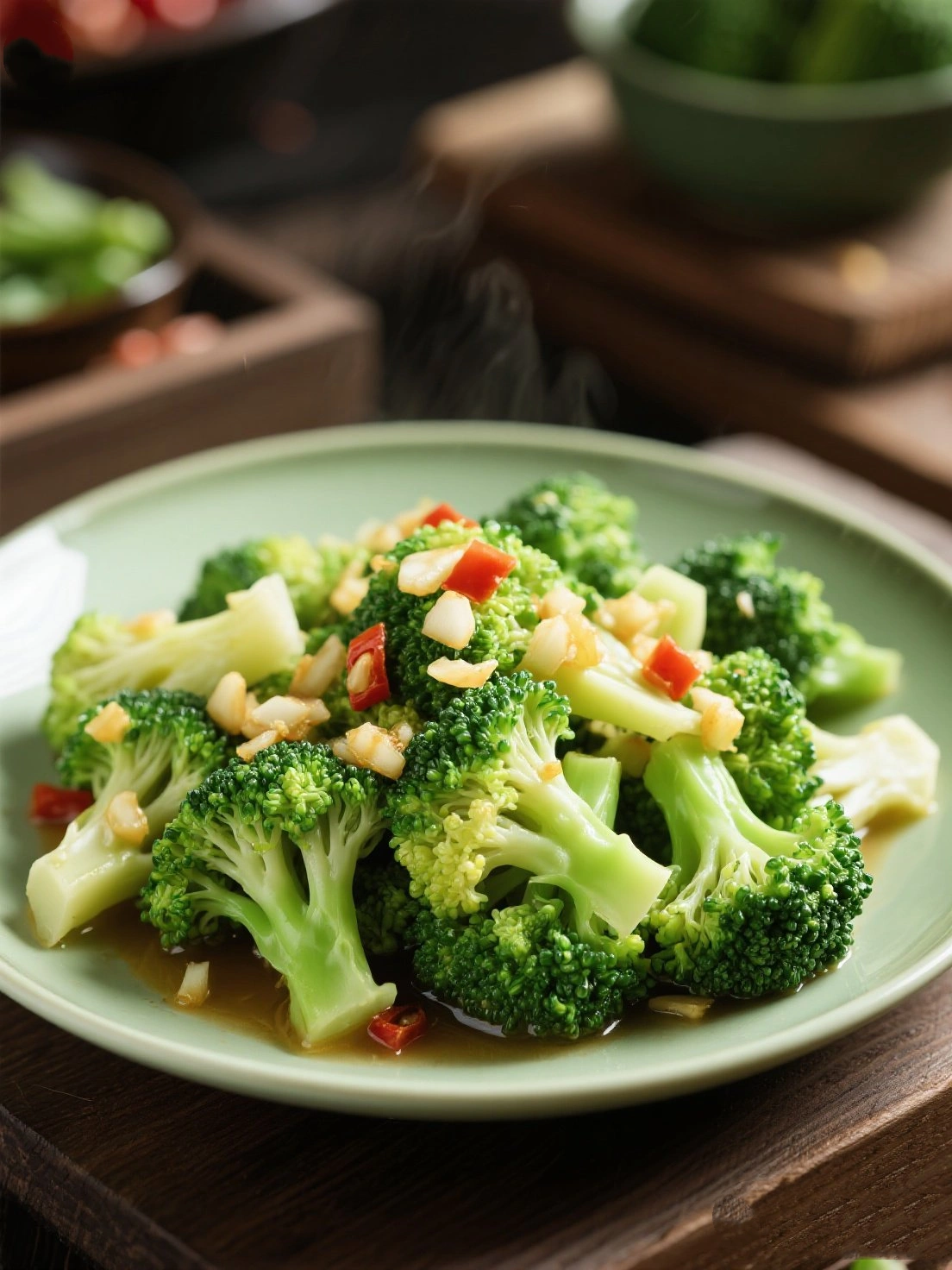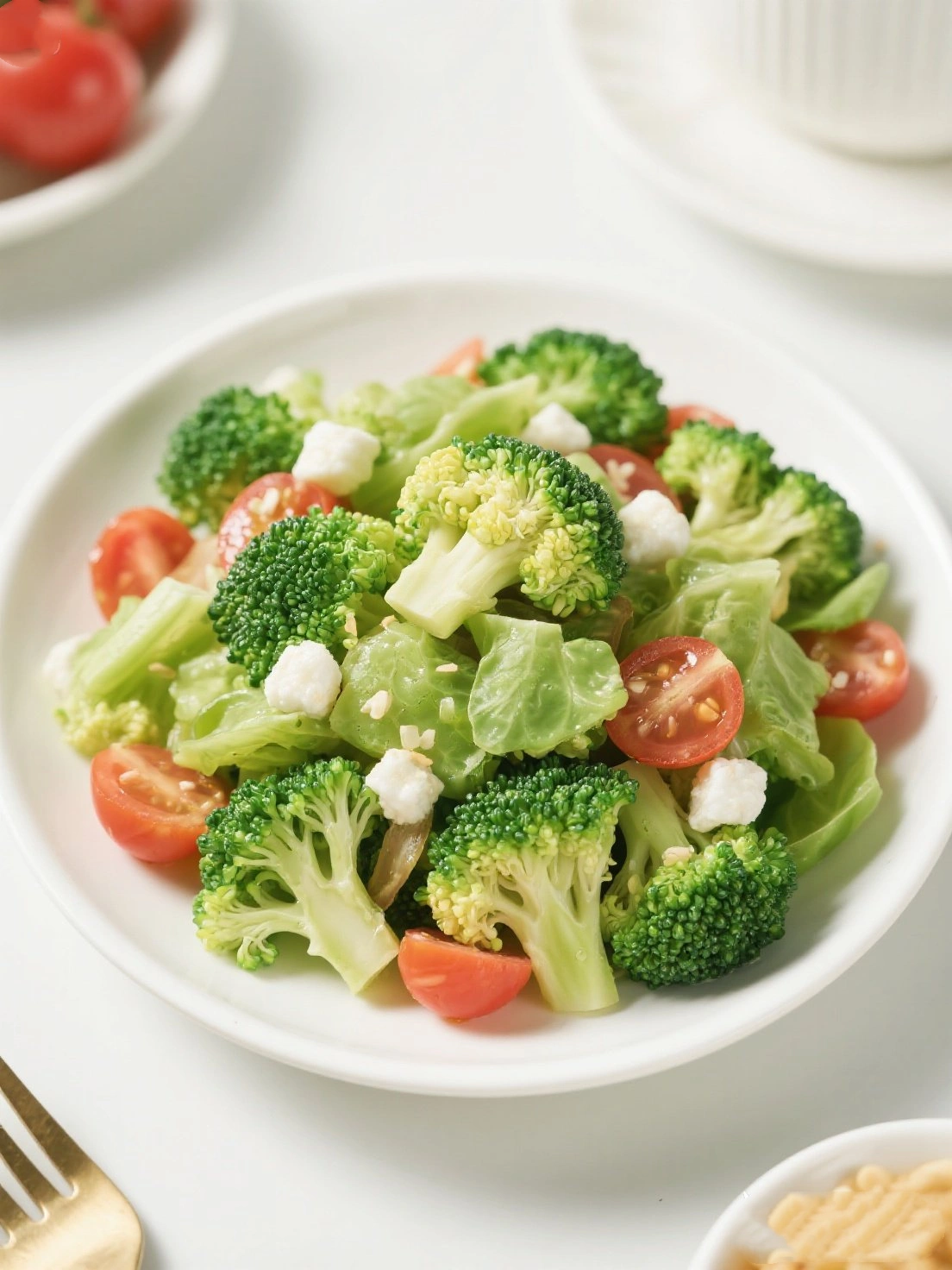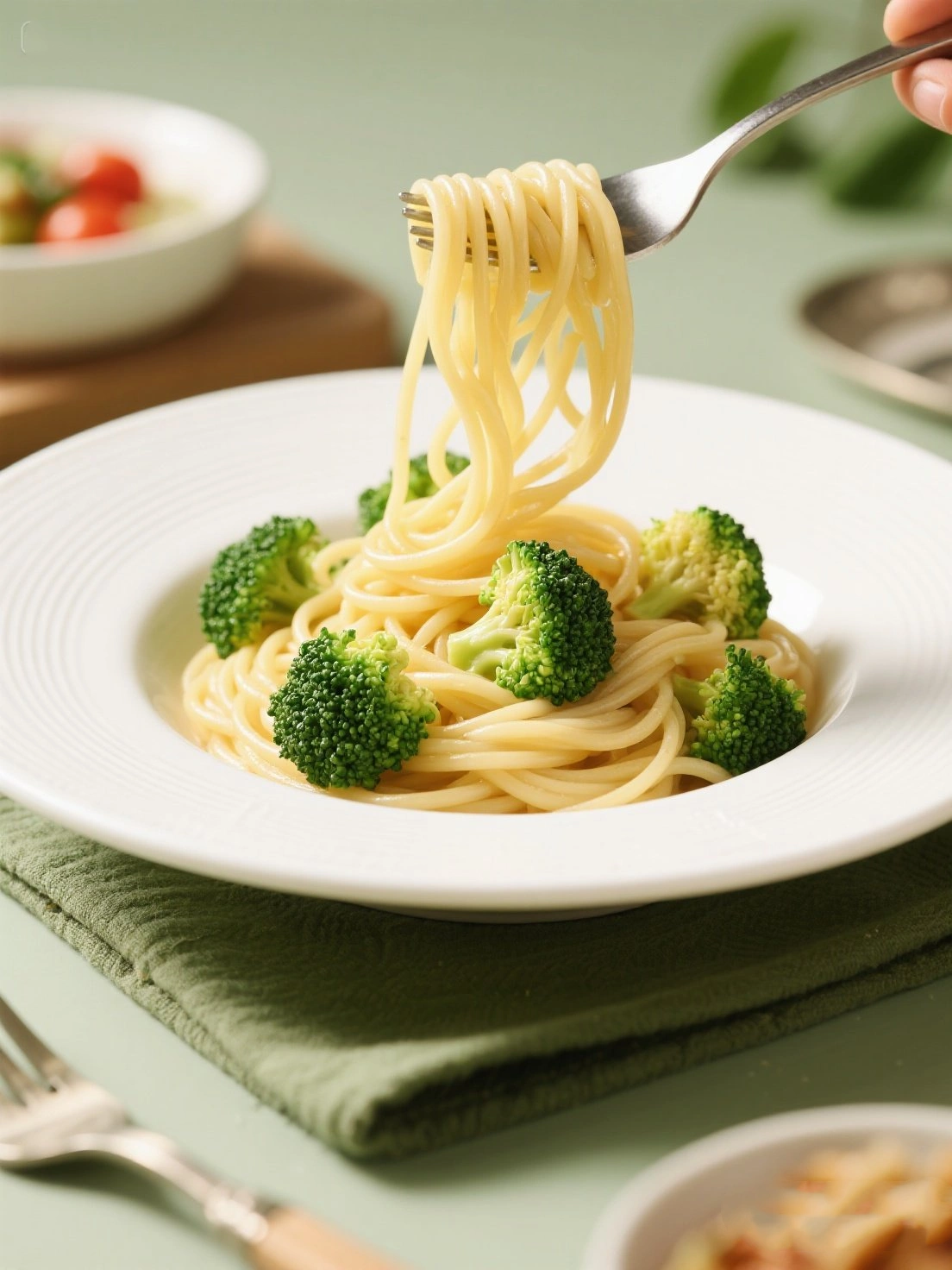Broccoli is an edible green plant in the cabbage family (Brassica oleracea) whose large flowering head, stalk, and small associated leaves are eaten as a vegetable. Originating from Italy where it was cultivated from wild cabbage, broccoli has been consumed since the Roman Empire and was introduced to England and America in the 1700s.
The name "broccoli" comes from the Italian plural of "broccolo", meaning "the flowering crest of a cabbage". This cool-weather crop thrives in temperate climates and is known for its dense, tree-like clusters of green flower buds that form the edible portion of the plant.
Modern varieties include the familiar Calabrese broccoli with its large green heads, sprouting broccoli with multiple thin stalks, purple cauliflower (a broccoli-cauliflower hybrid), and broccolini (a cross between broccoli and Chinese kale). Broccoli has gained worldwide popularity as a nutritional powerhouse vegetable.
